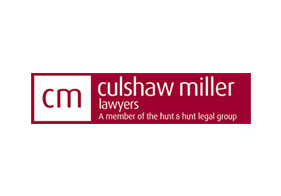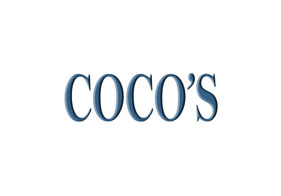Your website is your business face. If it’s not optimized, your business needs a face uplift. Fortunately, you can perform a cosmetic search engine optimization (SEO) procedure.
Simply put, plastic surgery SEO is the trick to landing high-value clients and enhancing your business’s online appearance. That’s because most plastic surgery enthusiasts start their research online.
If you want your business page to be seen online, it must be on the first page of the search engine result page (SERP). Research shows that as many as 71% of users limit their research clicks to the first page of Google.
In other words, you need the best SEO tactics to win over high-paying clients. Don’t worry; we have all the SEO tricks up our sleeves. Here, we’ll delineate what SEO for cosmetic surgeons entails.
You may contact us for a more personalized strategy for your cosmetic surgery business.
Why Do You Need SEO for Cosmetic Surgeons?
Plastic or cosmetic surgery is a medical procedure that corrects body or facial defects. The goal is always to improve the appearance or function of a body part. Lately, plastic surgery is all the rage. As you may expect, the market is saturated, hence the need for visibility and accessibility.
The plastic surgery industry is a game of appearance through and through because even your clients are persuaded by what they see and how your services appear.
Your potential clients often start their research with a Google search. In the search, they seek two essential things: reassurance and trust.
Here’s where SEO saves the day.
It’s a bridge between your expertise and the clients seeking it. While keywords and backlinks are essential to SEO, it’s beyond that. Plastic surgery SEO does the crucial task of connecting clients to their patients when they need it the most.
When you optimize your website to contain valuable blogs or answers, you establish yourself as an authority in the industry.
SEO also targets the right patients who require your specific services. You can always ensure that the clients who walk through your clinic doors will patronize you. Such effective tactics convert an online consultation to an actual patient.
Valuable Cosmetic Surgery SEO Strategies To Attract Clients
Here are the plastic surgery strategies that magnets better clients.
Understanding Your Audience
The premier step to SEO is understanding your clients. Who are the people that are most likely to contact you? To address this, you need a user persona.
Create a personality in your mind and put yourself in their shoes.
Each client has a story prompting the need for cosmetic surgery: lack of confidence, physical issue, dream body. Regardless of their stories, they all start with a search query.
So, your SEO strategy should be rooted in a deep understanding of all these personalities. That’s how to satisfy all their search needs and concerns before they ask. When you create content that resonates with each client’s pain points, your website projects hope.
Knowing each client’s needs also allows you to target long-tail keywords. While obvious keywords like plastic or cosmetic surgeons are valid, long-tail keywords may be more personal. For instance, “recovery time for eyelid surgery” and “best surgeon for nose reshaping in New York” hit more exact pain points.
In the end, it all boils down to creating a space that makes clients feel important. Understanding each client’s needs is the key to achieving this.
Knowing your audience and being clueless about what to do with that information is possible. That’s where keyword research and strategy comes in.
Keyword Research and Strategy
Starting SEO without keyword research is like searching for a needle in a haystack. That’s mission impossible. Keywords reveal your client’s search intent. It’s like having an overview of what your customers want and serving their needs.
That leaves the question: how do you find the right keywords in this haystack called the internet?
You don’t need to be a detective to find the right keywords. First off, start with a brainstorming session. What services do you offer? Facelifts? Liposuction? Brazilian Butt Lift? Also, ask yourself questions like how people would search for these services.
For instance, patients may not just look up “Dermabrasion.” A client may “check the cost of a Dermabrasion” or search for “Botox versus fillers for a smile line” instead of “Botox.” Such long-tail keywords capture a searcher’s high intent and are golden.
When you find these valuable keywords, you can expand your keyword list using tools like Ahrefs or Google Keyword Planner. But remember, you shouldn’t blindly chase height search volume. You should balance by finding relevant terms that aren’t too competitive.
Website Optimization for Cosmetic Surgeons
Another essential part of cosmetic surgeon SEO is website optimization. Think of your website as a digital consultation room. It should be homely, accessible, and attractive. That translates to the website being user-friendly and informative.
Website optimization generally falls under technical SEO. For your website to be fully optimized, it must load fast and secure. These factors enhance visitors’ experience and also boost your ranking.
Once your website’s technical aspect is settled, on-page SEO comes next. Each page must clearly communicate the message to potential clients and search engines.
Ensure your website has the right keywords in the right proportion and also in the metadata. In other words, avoid keyword stuffing. The goal is to inform your clients without stuffing keywords unnecessarily.
Visuals are also crucial aspects of content creation.
You can include images or videos, especially when they prove your skills and expertise. It’s essential to optimize your photos or videos with descriptive file names or alt tags. These extra SEO efforts ensure that your images contribute to your SEO without slowing down the site. Another facet of cosmetic surgeon SEO to consider is content marketing.
Content Marketing for Cosmetic Surgeons
Content marketing simply tells a brand story with purpose. Use your content to answer frequently asked questions and address your clients’ concerns and dreams. Each blog post should serve a simple purpose: inform, engage, or reassure your clients.
One trick to getting a searcher’s intent is checking Google’s “people also ask” section.
When you answer these questions, you can be sure you are answering an FAQ that a client may find valuable. This could lead to an online consultation and actual cosmetic surgery.
Also, use past clients’ testimonials as content. Ensure this shows the effect of the surgery on their appearance and confidence level. Most times, clients resonate with these stories and visualize your services better.
You may also explore short videos showcasing the before-and-after of a previous client. Of course, you’d need their consent for this. Video content like this could be more persuasive. They show results, and clients love to see that.
Another way to achieve content marketing is by using social media. Besides offering better reach, social media are perfect for visual content.
Exploring platforms like Instagram and Facebook builds trust and makes your business more accessible. In fact, creating video content that answers FAQs on social media makes you an expert that people can trust for cosmetic surgery-related issues.
Ultimately, whatever you do, always aim for clarity and value while creating content.
Local SEO Strategies
This is quite simple. Local SEO involves positioning your business so that anyone searching for a cosmetic surgeon in your area will find you. Simply put, Local cosmetic surgery SEO makes your establishment a local landmark in your community.
The First step is to list your business on Google My Business. It tells Google where you are and what you do.
And, of course, Google has one purpose: to provide such information to clients who need it. Provide every information, including your work hours, so that people know exactly how and when to reach you. Don’t forget to include a picture of your company.
Your content also comes into play in local plastic surgery SEO. For instance, use keywords that target your local area. For example, “Cost of Botox in New Hampton” or “Why choose a local cosmetic surgeon in Illinois?” Keywords like this connect with clients in a specific area on a personal level. It can launch a lasting client-doctor relationship.
Building a Strong Backlink Profile
Referrals have always been effective in business growth. In fact, a report shows that 84% of B2B decision-makers initiate purchase decisions through referrals.
What if we told you that backlinks are a form of referral or recommendation?
Backlinks are when a high-ranking website links to yours. It sends a message to users and search engines that your content is valuable and reliable. However, it still boils down to quality.
To get a quality backlink, develop content worth linking to. This could include guides on cosmetic procedures, infographics, research, or industry trends. Afterward, contact websites focused on health, beauty, or local business directories to link to your content.
Backlinking is the result of digital networking with other valuable website owners. Only sites with authority deliver backlinks that affect search engine rankings.
Monitoring and Improving Your SEO Performance
SEO is like an ocean. While you can set out to sail, you’d get lost without a compass. With the right metrics to guide you, you can master the ever-evolving waters of SEO. While ranking high on SERPs is an outstanding achievement, your conversion level determines actual success. The ultimate goal is your conversion.
How often do you get engagements that translate to consultation on your website? Not often enough? Then, you need to work on your conversion rate optimization (CRO).
That’s why you need tools like Google Analytics or Google Search Console. They show insights into your websites, such as time spent, bounce rates, and actions taken. You can’t determine the success of your Cosmetic surgery SEO strategy until you dive deep into metrics.
Are clients filling out forms and subscribing to your newsletters? Do they read our content till the end? These metrics show how well your content is performing.
You may also set SEO goals to help you track your results accurately and get a clear image of the outcome of your strategy. When a tactic isn’t working well, change it and try something new. Sometimes, a keyword performs better than others, which means those keywords resonate better with your clients.
On the other hand, a page with a high bounce rate could indicate faulty technical SEO or poor content.
Plastic surgery SEO is a continuous process. You must keep improving your strategy, learning, tracking, and repeating. Auditing your website often helps you identify technical SEO issues or new opportunities. Finally, follow SEO trends to stay relevant.
Hire a Great Digital Marketing Team
SEO for cosmetic surgeons hinges on getting more visibility. Your SEO should bridge the information gap between potential clients and your services.
To achieve this, you need the services of a great marketing agency. One that can manage your social media and website using a best-in-class internet marketing strategy. You can trust Slinky to deliver nothing short of excellence.
Let’s help you implement strategies that put your business at the forefront of your industry. Ready to get started? Top-notch plastic surgery SEO is one call away.



























